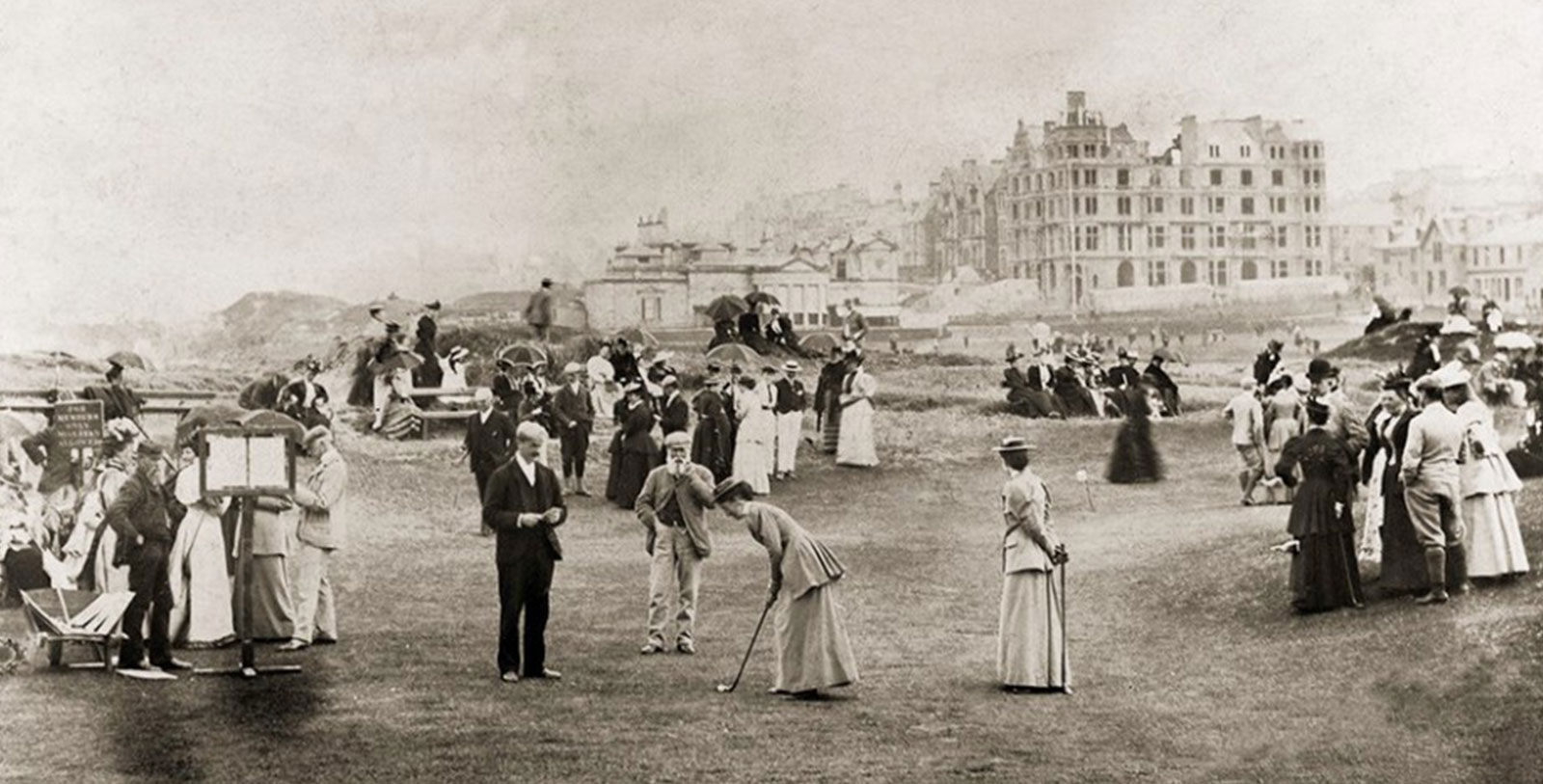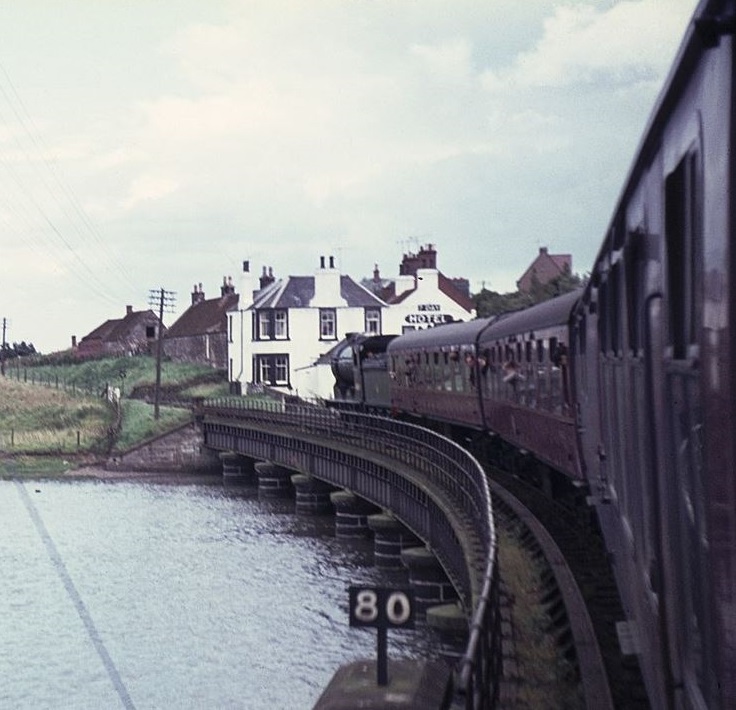Receive for Free - Discover & Explore eNewsletter monthly with advance notice of special offers, packages, and insider savings from 10% - 30% off Best Available Rates at selected hotels.
history
Discover the Old Course Hotel, Golf Resort & Spa, which is just steps away from The Old Course.
Old Course Hotel, Golf Resort & Spa, a member of Historic Hotels Worldwide since 2017, dates to 1852.
VIEW TIMELINEA member of Historic Hotels Worldwide since 2017, the Old Course Hotel, Golf Resort & Spa, is among the best destinations to visit in northern Scotland. Located in downtown St Andrews, this fantastic historic hotel sits just steps away from the renowned Old Course—one of the world’s most famous golf courses. In fact, the Old Course Hotel originally opened to cater to the throngs of golf enthusiasts who had routinely traveled to the site year after year. But long before the Old Course Hotel made its triumphant debut, the land upon which it currently sits once house a train station for The St Andrews Railway. Developed during the mid-19th century, the railroad had been organized at the impetus of several St Andrews locals. They mainly wished to connect a spur onto the new Edinburgh and Northern Railway, which had opened to great success in the 1840s. Upon receiving approval from the government, the supporters of the project quickly hired engineer Thomas Bouch to guide its development. After months of construction, the spur—called “The St Andrews Railway”—finally opened in 1852. Despite some early maintenance mishaps, the St Andrews Railway proved to be incredibly popular among locals and visitors alike. The train station in downtown St Andrews hosted hundreds of guests, too, making it one of the most active places in the town. Driving the passenger traffic were throngs of golf enthusiasts, allured to the area by the presence of the historic Old Course.
But use of The St Andrews Railway declined considerably once automobiles and planes became more ubiquitous throughout the 20th century. Large sections of the tract began to close permanently by the 1960s, prompting several stations—including the facility in St Andrews—to shutter their operations. Nevertheless, British Railways—then the manager for the railroad—saw an opportunity amid the slide in business. Recognizing the staying economic potential of St Andrews as a tourist site for golf lovers, the organization decided to build a boutique hotel on the grounds of the former St Andrews train station. It specifically charged its subsidiary, British Transport Hotels, to supervise its creation. Work began in 1968 and lasted for several months. The lead architects chose Edwardian architectural aesthetics to craft the new structure’s appearance, hoping that the style would complement the rich heritage of St Andrews. Perhaps the most stunning aspect of the hotel’s design were the numerous underground floats that that acted as a counterbalance to the loosely bound sand that surrounded the foundation. The “Old Course Hotel, Golf Resort & Spa” debuted to great acclaim when the construction finally concluded. Indeed, the popuarlity grew so great that British Railways had to add more facilities just a few years later. The expansion specifically added a new business unit called the “Jigger Inn,” which was housed within the historic, 19th-century lodge of the former station master.
Even though the Old Course Hotel continued to prosper, British Transport Hotels eventually decided to divest itself of the location in 1982. What followed next was a fluid period of ownership that lasted for the better part of the next two decades. The hotel underwent numerous overhauls at the time, including a massive restoration that coincided with the beginning of the 113th British Open. (Anne, Princess Royal, even reopened the hotel amid a grand soiree.) Thankfully, stability finally returned to the Old Course Hotel, Golf Resort & Spa, when Destination Kohler acquired the building in 2004. A subsidiary of the renowned Kohler Company, Destination Kohler quickly set about reviving the grand structure’s historic character. Over the following years, the business diligently renovated the grounds to include outstanding facilities like the elite Kohler Water Spa. Great care also given to the many guestrooms and suites located throughout the complex, as well as the hotel’s very own series of exclusive fairways, “The Duke’s Golf Course.” (Opened in 1995, it was designed by five-time winner of the British Open, Peter Thompson.) Thanks to the continued stewardship of Destination Kohler and the Kohler family, the Old Course Hotel, Golf Resort & Spa, still ranks as one of Scotland’s most prestigious retreats. Few places in Scotland today can rival the heritage and prestige of this terrific historic hotel.
-
About the Location +
The Town of St Andrews dates back to at least the mid-8th century when the Pictish King Óengus I dedicated a new church in the area to Andrew the Apostle. Also known as “St. Andrew,” some his bones were supposedly transported to the area by Greek monk. As such, King Óengus I commissioned the construction of an imposing monastery that would adequately protect the remains. Soon enough, the church became a popular pilgrimage site for the religious in medieval Scotland. A small, yet vibrant, community emerged around the building, which serviced the throngs of pilgrims who descended upon the locale every year. At first, this rustic little village was known by the names of “Mucross” and “Kilrymont” before becoming permanently referred to as “St Andrews.” The Catholic Church also established its primary headquarters in the town at the height of the Middle Ages, making St Andrews the ecclesiastical capital for the Vatican in Scotland. Given the town’s newfound place within the Catholic faith, church officials began constructing a magnificent cathedral at the beginning of the 1100s. Work on the spectacular structure lasted for some two centuries, concluding with its consecration in 1318. Christened as St Andrews Cathedral, it quickly became the grandest church of its kind throughout the land. The building displayed an interesting assortment of Gothic and Norman-style architecture, reflecting the unique time period during which it was constructed. By the end of the 15th century, St Andrews’ Cathedral had become its own archbishopric due to the great religious influence it had come to wield.
The town itself had grown considerably since the dedication of St Andrews Cathedral. Upon the invitation of Bishop Robert, a small community of Augustinian monks had formed in St Andrews around the mid-12th century. They were then joined by two more religious orders: the Dominicans and the Franciscans. Construction also started on the imposing St Andrews Castle, which functioned as the home of the local bishop. Given the constant warfare between Scotland and England at the time, the church deemed that a heavily fortified bastion was necessary for the diocese’s survival. Much of the town’s secular expansion in that regard had transpired under the watch of King Malcom IV, who had decreed it a royal burgh in 1160. Many additional institutions appeared in St Andrews as a result, the most notable of which being schools. As such, St Andrews developed a scholastic reputation that was on par with its religious one. St. Salvador’s College and St Andrews University were among the first to open in St Andrews. Amazingly, one of those universities—St. Mary’s College—is still in operation today. St Andrews, thus, became one of the largest settlements in medieval Scotland by the dawn of the 13th century. It was soon known as a thriving medieval market town, defined by its prosperous fishing industries and annual fairs.
St Andrews acted as the epicenter for some of the most significant developments of the Scottish Reformation. Catholics and Protestants quarreled for control over the are throughout the 16th century, with St Andrews Castle being the ultimate prize. Several martyrs were made of religious figures on both sides as the town exchanged hands numerous times. St Andrews suffered greatly from the conflict. Nowhere was this more evident than St Andrews Cathedral, which had been reduced to ruins. St Andrews religious prominence had come to an unfortunate end. Sliding into a period of serious decline in the 18th century, it took the leadership of Hugh Lyon Playfair to revitalize the community. Playfair managed to restore St Andrews’ status as a center for learning, while also making it into a prominent holiday destination. Golf had thoroughly ingrained into the cultural identity of the town, as well, starting with the debut of The Royal and Ancient Golf Club in 1754. The club governed four historic courses, with the Old Course being its most famous. Over time, St Andrews earned international repute for the tranquility of its fairways. The golf courses began hosting the Open Championship in the late 18th century, which grew into an international professional tournament known as the “British Open.” Today, the Open Championship is the world’s most historic competition and is one of the four main international tournaments played every year.
-
About the Architecture +
While the current iteratio of the Old Course Hotel first debuted in 1968,
it showcases an amazing architectural blend of Edwardian-inspired architecture. When King Edward VII assumed the throne upon the death of his mother, Queen Victoria, it marked the beginning of a momentous—albeit brief—period of dynamic cultural expression for English society. Historians today refer to his reign as the Edwardian Era, which lasted from 1901 right up to the outbreak of World War I. Among the advances in art that defined the age was the wholesale embrace of new architectural forms. Architects and engineers throughout the United Kingdom were eager to utilize different design philosophies of the artistic tastes that characterized the previous century. Looking back to the Enlightenment, those building professionals started borrowing the structural aesthetics of Neoclassicism and Georgian architecture once again, infusing it with their preexisting concepts of Victorian architecture. As such, most buildings constructed throughout the Edwardian Era featured recognizable structural elements like frames of half-timbered exteriors that were typically filled with some form of brick or plaster. Sometimes, though, architects would fill the frame with a mixture known as “pebbledash,” which consisted of lime, sand and stone. The layout of the wood was so pronounced in a few cases that it made the structures resemble something developed at the time of the Tudors. Paneled doors outfitted with ornate stained glass were also commonplace, as was the presence of painstakingly carved wooden porches. Popular in the 18th century, the multipaned sash window became widespread once more, which allowed natural light to flood a building’s many open spaces. Bay windows—another holdover from the Georgian Era—would have been used frequently, too.
-
Famous Historic Guests +
Anne, Princess Royal, second child and only daughter to Queen Elizabeth II of the United Kingdom.




























